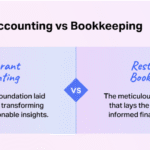Spring framework is amongst the most popular frameworks for creating enterprise-level Java applications. It is an open-source framework for Java applications and project development. Java developers can use any core function of the Spring framework in any Java program. It provides support for many other frameworks like Big Data, JPA, Social integration, and Web Services.
The Spring framework is a very logical and adaptable framework that offers seamless integration with other existing technologies. It offers aspect-oriented programming, modularity, and a functional API for converting technology-specific exceptions into reliable ones.
Its well-designed web MVC framework is an effective solution for existing frameworks, increasing developer productivity through its lightweight and flexible nature. The Spring framework’s free and high-quality documentation adds to its attraction for developers. In the Java EE (Java Enterprise Edition) ecosystem, Spring is the easiest way to develop applications. In fact, working with Java EE in parallel with Spring is more exciting and inspirational. That’s why Spring is also called Java Spring framework.
The latest version of Spring supports multiple application architectures like web, messaging, and transaction data. It includes Spring MVC, a servlet-based web framework, and Spring WebFlux, a reactive web framework. In this article, we will explore how the Spring framework is transforming Java development. But first, let’s understand the modules of Spring Framework.
Spring Framework Modules:
There are a lot of modules in the Spring Framework that include JDBC, Servlet, Struts, Expressional Language, Core, Beans, ORM, OXM, etc. The Core Container module is quite popular as it has the crucial functionality of the Spring framework.
One of this module’s essential components is the BeanFactory, which uses the Inversion of Control (IOC) pattern to decouple components and layers. Its responsibilities include configuring and aggregating objects known as Beans, employing configuration metadata, and managing their lifespan.
Spring JDBC Dao is another significant module that offers an exception hierarchy for database query management. JDBC refers to Java Database Connectivity, which is a part of JavaSE.
10 Reasons of How Spring Framework Transforms Java Development:
1. Lightweight and Easy & Simple:
Regardless of the seniority or experience of a Java developer, everyone prefers easy coding, and Spring offers the same. It is quite easy to learn and is built of many modules that allow writing applications code with interfaces or abstract classes just like Java applications. It is easy to couple and wire the components in Spring, which makes things easier as a Java developer can focus more on the application instead of its implementation. It is lightweight because we may inject dependencies as needed without having to include each one individually, saving the project from excessive memory use. When you hire Java developer, leveraging Spring ensures that your projects are efficient and manageable, allowing the developer to focus on innovation rather than boilerplate code.
2. Develop Secure Web Applications:
Security is always an utmost priority, no matter what kind of application it is. Using Spring Security, you can build a high-security application and customize the security settings to prevent any vulnerabilities in the project.
3. MVC Pattern:
The Model View Controller is a software design methodology that separates the implementation and business logic so that the Java developers can focus on the code for better performance. In layman’s language, the requests are initially accepted at the view, after which the controller sends them to the relevant model for responses, which are further sent to the view to be displayed at the application’s front.
MVC-based frameworks are easy to work with because of their methodical approach to receiving and handling requests. Spring supports the MVC pattern for project development, which promotes separation of concerns and loose coupling, both of which are essential properties of potentially helpful software.
4. Accessible Communication with Databases:
Database plays a crucial role in the application as all the data is fetched from the database to be displayed on the user’s front. The communication of the front end should be streamlined, and the Spring framework ensures easy and effective communication with databases. The DAO (Data Access Object) functionality allows read and write data to the database. With Spring’s support for DAO, data access technologies like Hibernate, JDBC, and JPA make it easy to interface with databases.
5. Modular Design:
Modularity is an exceptional feature of the Spring Framework. It has different JAR files that can work exclusively. It is organized into four components: core container, data access/integration, web, and test, which work together but separately.
6. Easy integration with other frameworks:
It is easy to use Spring with other frameworks like Struts and Hibernate. When Hibernate is connected with Spring, it makes CRUD operations for databases easier, increasing its demand.
7. Dependency Injection:
The dependency injection decreases the coupling and dependency between classes in projects so that the program remains reusable and maintainable. You can use modules of one project for another project, like a login page, registration page, and others. This reusability will save a lot of time and errors in the project.
8. Aspect-Oriented Programming:
By modularization, you can think differently about the program structure with aspect-oriented programming. It breaks down the logic into various parts known as concerns, and the concerns divide the business logic and increase modularity. AOP cannot be compared to OOP because it originated from the OOP paradigm. Aspect is the cornerstone to AOP’s modularity in the same way that class is to OOP’s.
9. Easy Testing:
No application is complete from the developer’s end. It always requires testing as there are always specific bugs and issues that need fixing. Dependency injection makes frameworks more testable, which is one of the reasons Spring is helpful for testing. Loose coupling is also functional for unit testing because it allows classes to be tested individually without relying on one another.
10. Handle External Resources Easily:
Spring effectively handles both internal and external resources, including property files, picture files, and XML files. Spring’s APIs for handling external resources are Resource and ResourceLoader.
Wrapping Up:
In this article, we have gone through various factors by which the Spring framework transforms Java Development. At Octal IT Solutions, the best Java development company in India, we can develop Java apps with advanced features and functionalities. Let us know your requirements.












